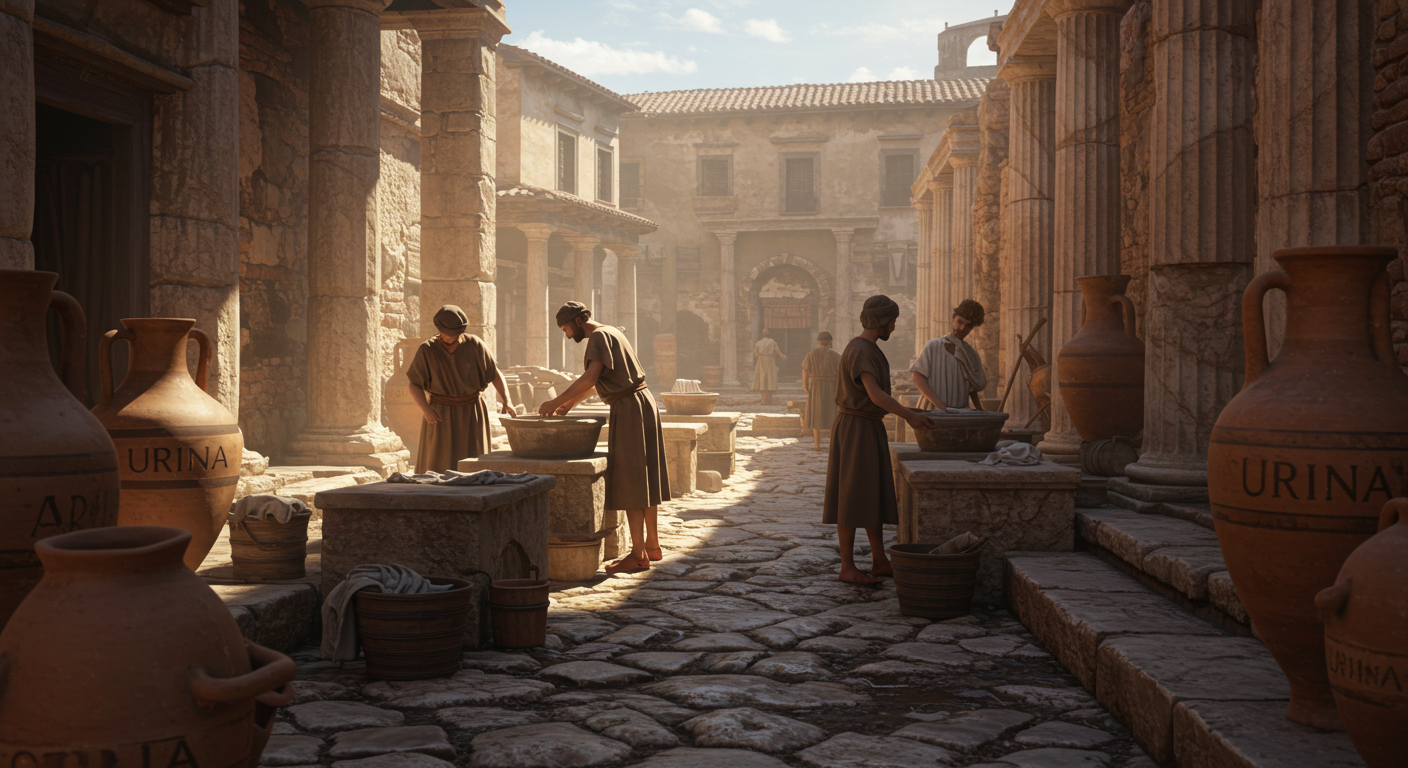Why Ancient Romans Used Urine for Cleaning

Why Ancient Romans Used Urine for Cleaning
Yes, they really did—and it worked surprisingly well
When you imagine the grandeur of ancient Rome, you might think of marble statues, aqueducts, or Julius Caesar—not buckets of urine. Yet, the Romans used human urine as a powerful cleaning agent for clothes, teeth, and even leather tanning. This shocking yet ingenious practice was based on chemistry they didn’t fully understand—but it worked.
The science they didn’t know they were using
Urine contains ammonia, a compound known for its ability to cut through grease and dirt. Over time, as urine stands, it breaks down and releases even more ammonia. The Romans discovered this effect and put it to use in laundries called “fullonicae.” Workers would stomp dirty clothes in tubs of stale urine to clean them thoroughly.
- Public urine jars – Citizens were encouraged to collect urine in jars and donate it to cleaners.
- Urine tax – Emperor Vespasian even imposed a tax on urine, calling it a valuable resource.
Other surprising uses of urine in Roman life
Cleaning clothes wasn’t the only use for this pungent liquid. The Romans believed in its cleansing power beyond fabrics. Some elite Romans reportedly used urine-based mouthwash to whiten teeth—though this is debated by historians.
- Leather tanning – Urine was used to soften hides before further processing.
- Mouth rinse – Texts mention using aged urine for oral hygiene, citing its bleaching effect.
- Bleaching wool – The ammonia helped brighten and whiten textiles.
What this tells us about ancient innovation
While it sounds repulsive today, the Roman use of urine shows how ancient societies found practical uses for everything. With limited access to chemicals, they used what was available—no matter how unsavory. It’s a reminder that necessity often breeds creativity.
External and internal references
Conclusion
Ancient Roman hygiene may seem shocking by modern standards, but it worked for centuries. Their willingness to embrace such bizarre methods—combined with a surprising understanding of natural chemistry—offers a glimpse into how resourceful past civilizations truly were.
Would you ever try an ancient cleaning method? Let us know in the comments below!
Curious about lost civilizations and ancient mysteries?
What if ancient societies knew how to survive without electricity, stores, or modern tools? The Lost Generator uncovers powerful self-sufficiency techniques inspired by forgotten knowledge. A must-read for history lovers, preppers, and curious minds alike.
Explore more ➜ 🗿 Discover the Survival Secrets of Lost Civilizations
📌 Original Content Notice: This article was originally published on Daily Fact Drop – Your Daily Dose of Mind-Blowing Facts. All rights reserved.
Copying, reproducing, or republishing this content without written permission is strictly prohibited. Our editorial team uses factual research and original writing to bring unique curiosities to our readers every day.